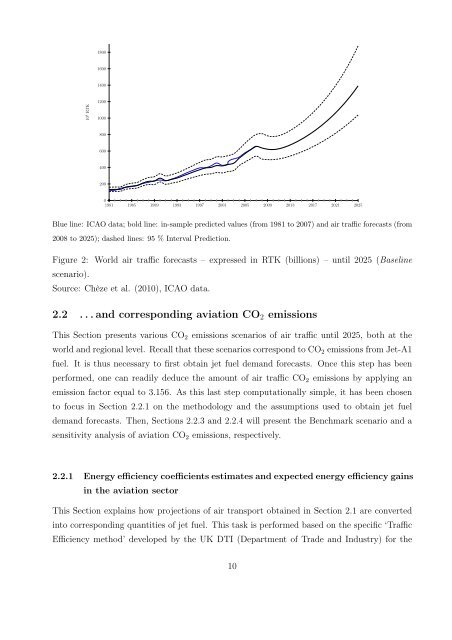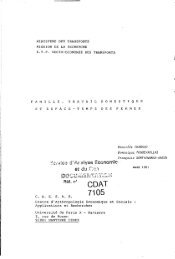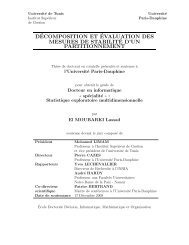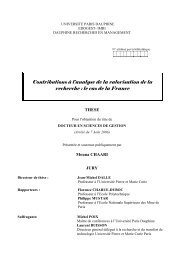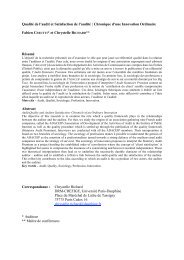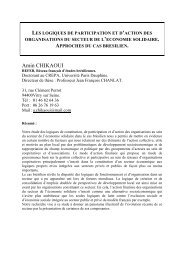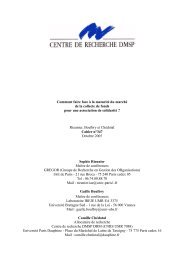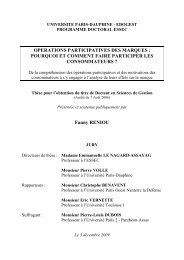12-02-Cahier-R- ... e-Chevallier-Gastineau.pdf - Base ...
12-02-Cahier-R- ... e-Chevallier-Gastineau.pdf - Base ...
12-02-Cahier-R- ... e-Chevallier-Gastineau.pdf - Base ...
Create successful ePaper yourself
Turn your PDF publications into a flip-book with our unique Google optimized e-Paper software.
10 9 RTK<br />
1800<br />
1600<br />
1400<br />
<strong>12</strong>00<br />
1000<br />
800<br />
600<br />
400<br />
200<br />
0<br />
1981 1985 1989 1993 1997 2001 2005 2009 2013 2017 2<strong>02</strong>1 2<strong>02</strong>5<br />
Blue line: ICAO data; bold line: in-sample predicted values (from 1981 to 2007) and air traffic forecasts (from<br />
2008 to 2<strong>02</strong>5); dashed lines: 95 % Interval Prediction.<br />
Figure 2: World air traffic forecasts – expressed in RTK (billions) – until 2<strong>02</strong>5 (<strong>Base</strong>line<br />
scenario).<br />
Source: Chèze et al. (2010), ICAO data.<br />
2.2 . . . and corresponding aviation CO2 emissions<br />
This Section presents various CO2 emissions scenarios of air traffic until 2<strong>02</strong>5, both at the<br />
world and regional level. Recall that these scenarios correspond to CO2 emissions from Jet-A1<br />
fuel. It is thus necessary to first obtain jet fuel demand forecasts. Once this step has been<br />
performed, one can readily deduce the amount of air traffic CO2 emissions by applying an<br />
emission factor equal to 3.156. As this last step computationally simple, it has been chosen<br />
to focus in Section 2.2.1 on the methodology and the assumptions used to obtain jet fuel<br />
demand forecasts. Then, Sections 2.2.3 and 2.2.4 will present the Benchmark scenario and a<br />
sensitivity analysis of aviation CO2 emissions, respectively.<br />
2.2.1 Energy efficiency coefficients estimates and expected energy efficiency gains<br />
in the aviation sector<br />
This Section explains how projections of air transport obtained in Section 2.1 are converted<br />
into corresponding quantities of jet fuel. This task is performed based on the specific ‘Traffic<br />
Efficiency method’ developed by the UK DTI (Department of Trade and Industry) for the<br />
10


